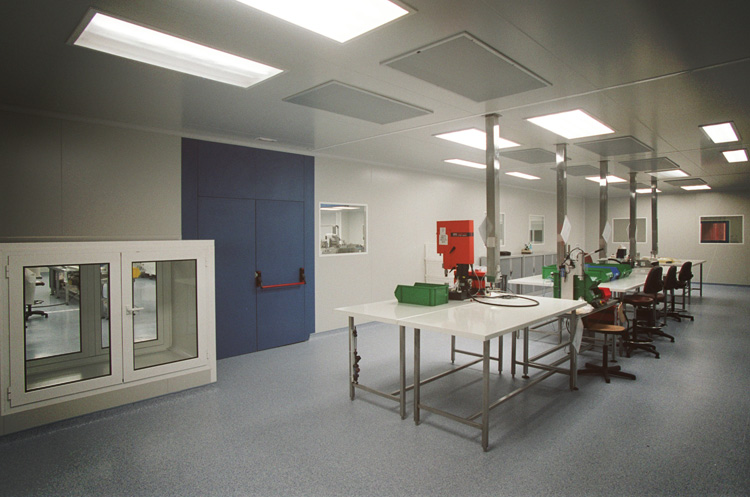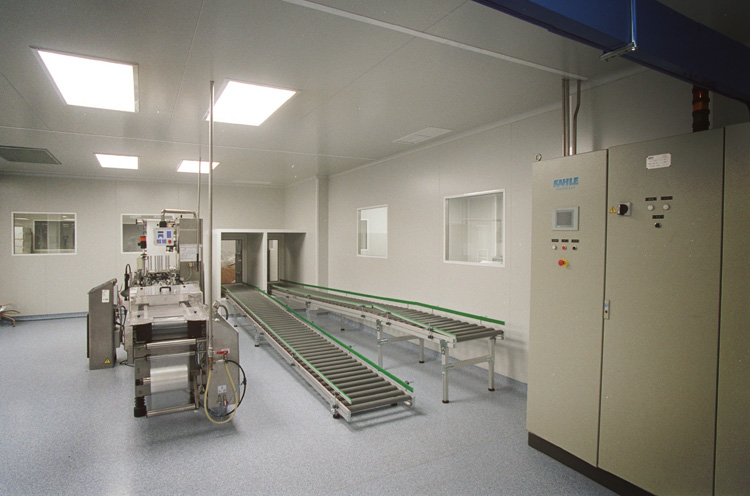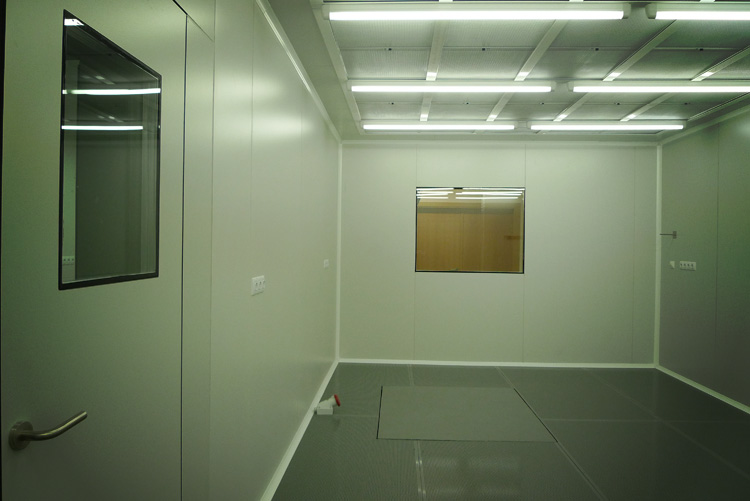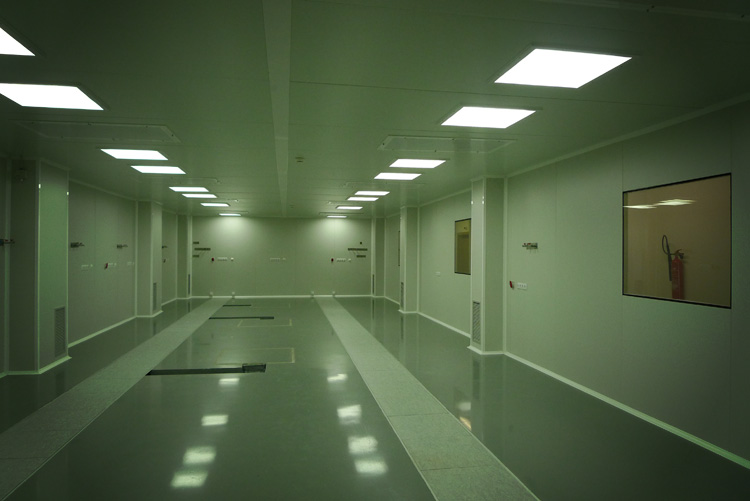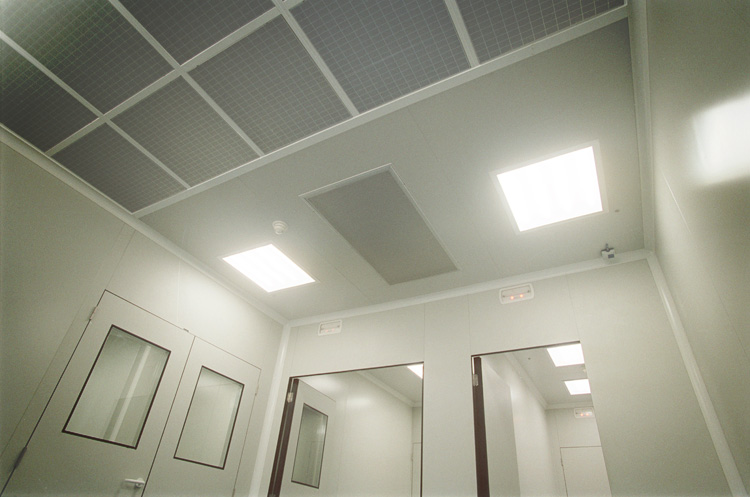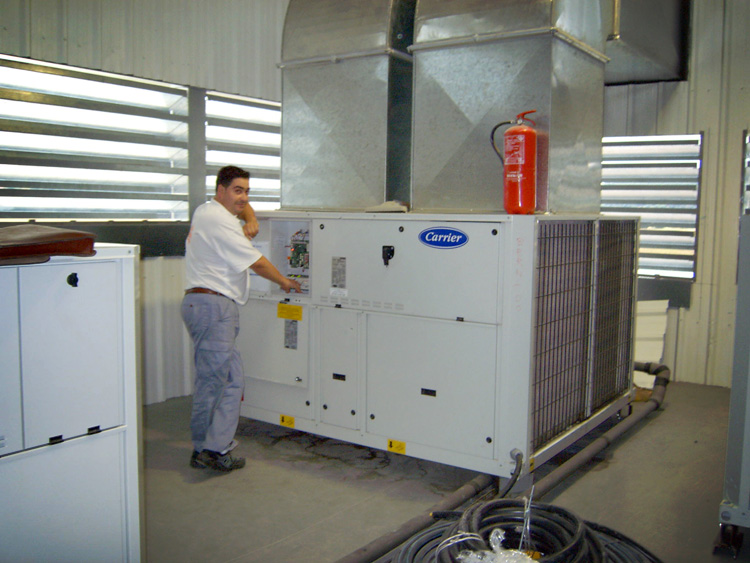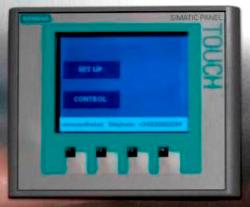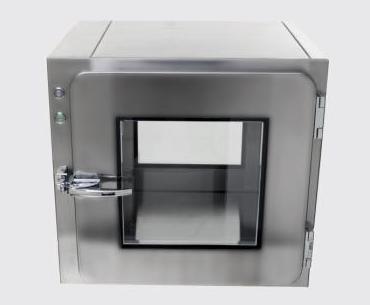
-
-
-
CLEAN ROOMS
-
Clean rooms and controlled environments
-
Clean rooms and controlled environments are an essential part of many production and research processes.
For example, in the microelectronics industry, a completely particle-free atmosphere is necessary in production areas used to manufacture VLSI circuits (Very Large Scale Integrated).
In the food industry, particle and bacteria containment are essential to guaranteeing product quality.
In the pharmaceutical industry, their function is to assure the quality of manufacturing and control processes.
-
The goals are as follows:
- Microbial exclusion: to prevent contamination of sterile materials, components and surfaces in aseptic operations.
- Microbial limitation: applied in areas near aseptic operations to minimise contaminants entering the exclusion zone.
- Particle exclusion: often associated with microbial exclusion, this is also applied independently to washed materials before sterilisation.
- Particle limitation: to reduce the number of particles on elements before washing.
- Cross-contamination exclusion: to prevent contamination of one material or product by another.
To attain the aforementioned goals, each project includes a flow diagram of the necessary processes and operations. This takes into account all the issues related to functionality, maintenance and control and the conclusions are presented in documents and plans requiring validation by qualified personnel.
The working document is the lay-out of the rooms required according to the project's processes and operations.
The first step is to determine the logical flows of personnel and raw and other material according to Good Manufacturing Practices and avoid functional problems that hinder maintenance and control operations. Consequently, designs include technical areas in which maintenance and control personnel can access the facilities without interfering with everyday production operations.
-
-
-
-
-
-
Clean rooms architecture
Walls, ceilings and floor coverings
Walls and ceilings
Completely smooth dovetailed walls and ceilings made of self-supporting sandwich panels. Installed as partition walls or fixed to pre-existing structures.
Finish materials:
- Metals: pre-lacquered, galvanised, stainless or plastic-coated steel
- Thermosetting synthetic resins
- Melamine
Filling materials and densities: - Extruded polystyrene: 30 and 40 kg/m3
- Polyurethane: 40 kg/m3
- Rockwool: 175 kg/m3
Thicknesses: - From 25 to 100 mm
Reaction to fire: - M-0
- M-1
Other characteristics: - Inert to micro-organisms and good reaction to various chemical agents
To prevent dust accumulation and make cleaning easier, joints between walls, floors and ceilings are finished with coved skirting.
Floor coverings
Made in a variety of high-hardness, heavy-duty, highly resistant finishes that are easy to maintain and clean.
Accessories: doors, windows, lights, locks, etc.
- Doors: sandwich-type doors with the same specifications as the self-supporting panels. Available in single- or double-leaf versions with spyholes and electric locks.
- Windows: double-glazed safety glass fitted seamlessly into the panel.
- Lights: specially designed to illuminate sterile environments, such as clean rooms, operating theatres, laboratories, etc.
- Control panels: used to control facility components (lights, fans, etc.), and monitor clean room and filter pressure gauges, automated equipment and other operating systems.
-
Clean rooms filtering
Filters are the heart of a clean room
Filters are the heart of a clean room. However, many factors need to be taken into account when classifying clean rooms and choosing the right filters for pre-filtering and final filtering is vital to achieving the desired outcome.
Use of high-efficiency final filters requires installation of pre- and intermediate filtering stages to guarantee long final-filter service life, prevent production stoppages when they have to be replaced and avoid the numerous tests required to check that the filters meet requirements.
Effective particle retention by absolute filters is vital to air quality. Developments in particle counters and the need to ascertain filter efficiency in each stage based on particle grading have given rise to new testing methods, such as laser particle-count testing, especially for high-efficiency absolute filters.
The best-known international denomination for absolute filters is HEPA (High Efficiency Particulate Air Filter). These are defined as a "single-use filter with a large filter area, minimum effectiveness of 99.97% on DOP particles or similar aerosols and a pressure loss for a new filter of 2.54 cm (1 inch) of water column during testing performed at the anticipated nominal performance level" (IES-RP-CC-001-86).
EUROVENT has classified high efficiency filters into five categories (EU-10 to EU-14) based on their efficiency measured under the EUROVENT method.
-
Clean room climate control
Humidity and temperature control
Air conditioning adapted to room conditions and size to create an airflow that helps purify the controlled zone.
Centralised or distributed climate control systems are used to control temperature and humidity and achieve a comfortable environment, perform the necessary number of renewals per hour and keep consumption to a minimum.
The most commonly used systems employ heat pumps or exchangers based on steam or water (hot/cold) circulation or direct expansion. Humidification and dehumidification systems
The air circuits comprise sealed heat-insulated conduits that, where necessary, include hermetic sealing systems to isolate zones during the sterilisation process.
-
Clean rooms air showers
Complete cleaning of personnel and material
Air showers
Used to clean personnel and material entering the clean room. Air is blown out of the nozzles at high speed and dirt is retained in the HEPA absolute filters. Air showers use a digitized management control.
-
Pass Box
-
These materials access areas between two different classification zones are set according to the kind of service they need to provide. All of them have two doors, one from the area outside the room and the other in the cleanroom itself.
The doors are interlocked avoiding any chance to open both doors simultaneously and once opened one of them; the other is subject to preset cycle conditions.
There are three types of pass box:
- Static
- Dynamic (with HEPA filter)
- Biological
-
-
-
-




